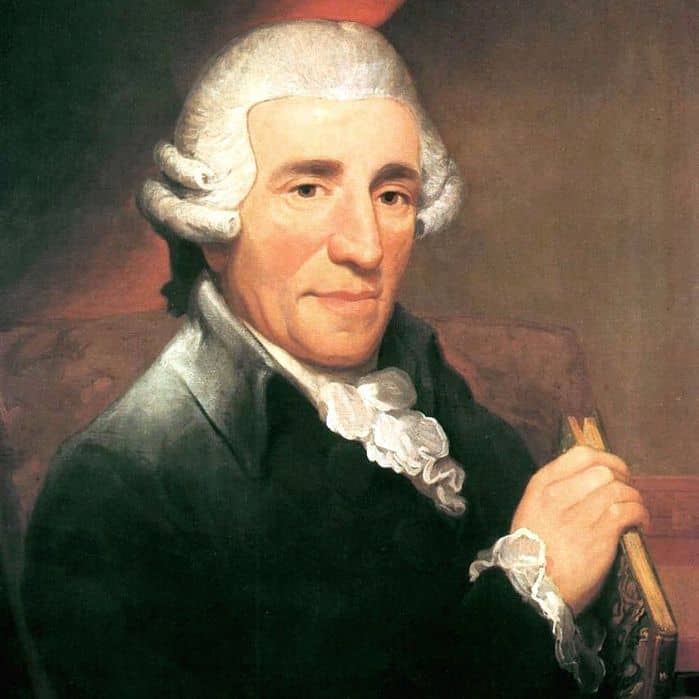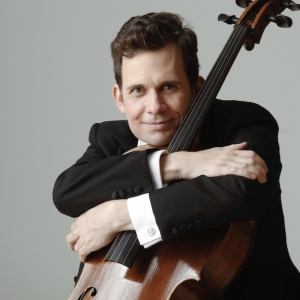
The Origins of Haydn’s Cello Concerto No. 2 in D Major (Part 2 of 2)
Brinton Smith
My research into this topic was inspired by upcoming concerts this weekend with the Houston Symphony. The Saturday January 30th performance is viewable on livestream at 8pm Central time. I am heavily indebted to Thomas Tolley and Dr. George Kenneway, whose groundbreaking research I only survey in this article. Their papers should be read in their entirety for the rich level of background and detail they provide.
Unlike most of Haydn’s symphonic commissions, the cello concerto would stay unpublished for two decades. The market for cello concerti was more limited than for piano and violin concerti and was focused on works playable by advanced amateur musicians. Although there was a general increase in the difficulty of published cello writing in the late 18th century, only the concerti of Boccherini rivaled the Haydn in difficulty. It was only some 20 years later, in 1803 as Haydn, in deteriorating health, was methodically selling many of his unpublished works, that he finally gave the cello concerto to Johann Anton André, who produced the first edition in early 1804 in Offenbach am Main. While we cannot be certain that the manuscript that has survived was the one used for the engraving, it does contain a few added bowing articulations in another hand which were duplicated in the 1804 André edition. This first edition also varies slightly from Haydn’s manuscript in a few other instances, adding or replacing Haydn’s slurrings and articulations. The source of this editing is unclear, but the writing from another hand and the generally cellistically oriented nature of these alterations suggest it would not have been Haydn (It was also unlikely to be Cervetto, since the parts used for the premiere were almost certainly destroyed, and by 1803 he was largely retired in London)
![]()
Haydn Manuscript
![]()
André 1804

Haydn Manuscript
![]()
André 1804
Note the differences in measure 2, beat 2, m.4, b.1 and the change of the typical “Haydn ornament” (generally believed to be executed as a turn: upper neighbor, main, lower neighbor, main) in m6, b.1 to a trill.
As George Kenneway details in his 2012 article exploring the early performing editions of the concerto, the next published edition of the work would not appear until 1860, also published by André, but edited by the cellist and arranger Robert Bockmühl. Bockmühl made numerous changes to the 1804 André edition, rewriting sections, adding phrasing, dynamic and articulation marks and shortening the final section of the third movement. He provided cadenzas composed by the cellist Carl Ripfel, a reported virtuoso cellist who eschewed solo performing due to nerves and spent 45 years as the principal cellist of the Frankfurt Opera. Ripfel’s cadenzas are among the most expansive ever written for the work – the first movement cadenza alone requires four printed pages (The Haydn D has enjoyed perhaps the richest tradition of performer cadenzas in the cello repertoire including those by Cossman, Popper, Brandukov, Servais, Becker, Klengel, Casals (who drew from Klengel), Feuermann (who drew from Casals), Piatigorsky, Gendron and Rostropovich, to name a few)
The next edition, published by Breitkopf & Härtel in 1890, was the now infamous arrangement by Francois Gevaert, a professor of orchestration at the Brussels Conservatoire. Gevaert’s alterations including enlarged wind orchestration, the addition of much cellistic filigree and dramatic cuts in the first movement. However unpublished research by Jerome Carrington has revealed that the cuts, revisions, additions and cadenzas of this edition were actually the uncredited work of the Belgian virtuoso Adrien-François Servais, who made his alterations working from the Bockmühl edition prior to his death in 1866. Gevaert’s contribution was primarily the expanded orchestration. This highly altered Servais-Gevaert edition was the form in which the concerto was primarily known in the first half of the 20th century. Most of the subsequent performing editions that followed, including those of Becker, Whitehouse and the once ubiquitous Rose International edition, maintained Gevaert’s alterations to the score. (Becker, in a separate commentary on performing the concerto suggests metronome markings of eight note=104-108, eighth=66-69 and dotted quarter=84 for the respective movements) Klengel, however, in his 1905 edition, seems to have had access to the original 1804 André edition, as his alterations are considerably less severe than those of Servais-Gevaert, in some cases restoring the original 1804 André version.
Emanuel Feuermann was the first notable performer to eschew many of the Gevaert alterations in his 1935 recording, the same year that William Altmann’s Eulenberg score restored the original André version to print. Piatigorsky was so incensed by the changes made in the Gevaert edition that he reportedly told students that they should ”give that edition as a present to their worst enemy!” Maurice Gendron championed Haydn’s original version in his 1961 recording conducted by Pablo Casals, and both Gendron’s edition for Schott and the Henle edition are based upon the manuscript, rediscovered in 1951. However, both the Schott and Henle solo parts, even in these ‘urtext’ editions, bear slurrings and editorial markings of Gendron and Reiner Ginzel, respectively, that obscure the sparse simplicity of Haydn’s score (those wishing to see an unedited Henle part can look to the cello part on the piano score, but even then, there are places where the original is altered and one must accept the editorial judgment on faith) Many of the slurrings that became ingrained from the Bockmühl and Servais-Gevaert editions have remained indelibly imprinted on the performance tradition, even as the other ‘romanticizations’ have been removed.
Haydn Hob VIIb:2 1st movement, bar 30

Haydn Manuscript

André 1804

(excerpted from Dr. George Kennaway (2012). Haydn’s Cello Concertos, 18601930: Editions, Performances, Reception. NineteenthCentury Music Review, )
There are no records of any performance of the concerto after the 1784 London concerts until a Parisian premiere by Emil Norblin in 1855 and an 1856 London revival by Alfredo Piatti (thought at the time to be the London premiere.) London critics dismissed the work as “old fashioned’ and “rococo… of no value whatever” and the Parisian critics reacted similarly. It is worth remembering that in the first half of the 19th century, Haydn in general was widely considered passé and even the Mozart concerti, save for K.466, were largely unplayed.
However continuing efforts to revive interest in 18th century music and this work in particular, led by performers like Piatti, Carl Schroeder and Grützmacher- who performed the Haydn in 1867 in Meiningen- eventually began to bear fruit. Though still a target for critics well into the early 20th century, the Haydn was increasingly championed by cellists and, by the 1890s, had become a standard part of the conservatory repertoire. The concerto grew in popularity with the public as well and by the 1930s had become, along with the Dvorak, one of the most frequently performed cello concerti. Casals performed it regularly and , and it was chosen by Garbosouva in 1927 and Feuermann in 1935 for their US debuts (The reviews for Feuermann’s Haydn debut, interestingly, were lukewarm, though these same critics readily admitted their error in not recognizing his genius when he performed a Town Hall recital 12 days later.) Early acoustic recordings of the second movement were made by Casals (1916), Bottermund, Hekking and Van Isterdael, while both the second and third movements were recorded by Feuermann (at age in 19, in 1921) and Foldesy (c.1916-19). The complete concerto was first recorded by Suggia in 1928, then Feuermann (1935), Cassado (1940) and Tortellier (1947). Casals had recorded the first two movements in London in 1945 when he abruptly broke off relations with Britons for political reasons and left the recording unfinished. Today there are more than 100 recordings of the work in the catalog and its position as a mainstay of the repertoire (as well as a compulsory work for many orchestral auditions, particularly in Europe) is firmly established.
My hope in presenting some of the history behind the concerto is that we might regain some respect for the original concerto, freed from the inaccurate aspersions cast on its authenticity and the pastiche of historical performing editions that have shaped how we conceive the concerto. Despite the easy availability of an original manuscript on IMSLP, many cellists still give not even a fraction of the level of introspection to slurrings and articulations in Haydn’s own hand that they give to secondary editions of the Bach suites. It was, of course, typical for the performers of the time to add their own slurrings and articulation, and there are numerous instances where Haydn clearly simply omitted an intended slurring or was inconsistent in his application of it- perhaps deliberately. However, looking at published works by James Cervetto or Anton Kraft, it is clear that in their own cello works, where the slurrings and articulations are written just as they were meant to be performed, they slurred far less of their passage work than has become tradition with this D major concerto. Much of the performing tradition in this piece comes from the romantic, not the classical tradition. I am finding in my own explorations that the simpler, detached articulations of the score are often cleaner and more rhythmically vital to my ear, and I believe they have a simpler charm than the traditional bowings I have used in the past.
In the end, these decisions are personal. We are modern artists, not members of a historical re-enactment society and the choices that we make must be the ones that we believe are the most effective musically today, not necessarily what is believed to be the most authentic. But as artists, it is our duty to always explore and learn, and in understanding how much of our modern Haydn D major tradition results from romantic performing editions, rather than Haydn’s score, we have the chance to see the work through fresh eyes. With its unusual combination of virtuosity and simplicity, this concerto is in many ways the most difficult and demanding in the repertoire. In the end, as Casals admonished “We must play this music with all its grace – it is so free, fresh and lovely. Not one note dry! Always something lovely, always singing.”

James Cervetto, from 6 violoncello sonatas, Op.3

Anton Kraft, from 3 cello sonatas, Op.2
Bibliography:
David Blum, Casals and the Art of Interpretation (London: Heinemann, 1977)
Burney, General History, volume 4, 669.
Jerome Carrington, Francois Servais’s Manuscripts of the Joseph Haydn D major Cello Concerto, unpublished manuscript (2003), Brotherton Library, University of Leeds, MS 1773.
Gazetteer and New Daily Advertiser (30 March 1784)
Dr. George Kennaway NineteenthCentury Music Review / Volume 9 / Issue 02 / December 2012
SIMON McVEIGH (1989) THE PROFESSIONAL CONCERT AND RIVAL SUBSCRIPTION SERIES IN LONDON, 1783–1793, Royal Musical Association Research Chronicle, 22:1, 1-136, DOI: 10.1080/14723808.1989.10540933
James Cervetto and the Origin of Haydn’s D Major Cello Concerto. / Tolley, Thomas.
In: Eighteenth-Century Music, Vol. 16, No. 1, 14.02.2019, p. 9-29.
Tovey, Donald Essays in Musical Analysis: Concertos (Oxford: Oxford University Press, 1948), xi.
Dmitri Markevitch, review of S. Gerlach (ed.), Joseph Haydn Konzerte fu ̈ r
Violoncell, Revue de musicologie, 69 (1983): 138.
Subjects: Historical, Repertoire
